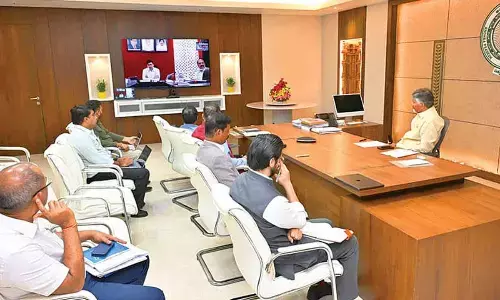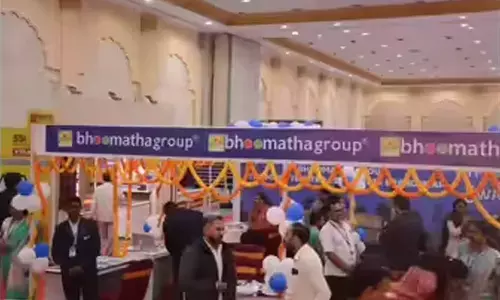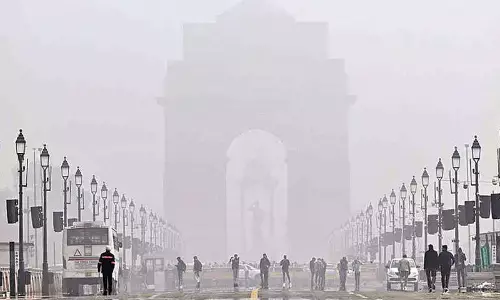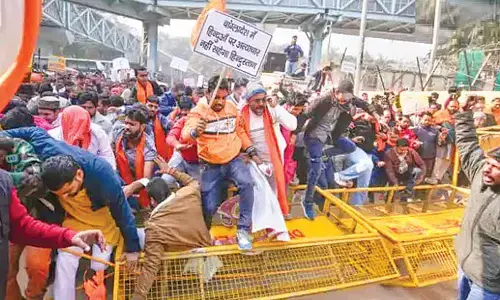Yakshagana art form breaking new ground, reaching wider audiences

Yakshagana Sammelana established the fact that the rich folk art is thriving in coastal Karnataka and charting a new course for its future with more participation of women performers apart from reaching out to new audiences
Mangaluru: The recent state-level Yakshagana Sammelana established the fact that the rich folk art is thriving in coastal Karnataka and charting a new course for its future with more participation of women performers apart from reaching out to new audiences.
The two-day Sammelana held in Udupi on February 12 and 13 which had exhibitions, seminars and shows related to the traditional art form was successful in its intent. The idea was to create a space for the art form in the entire state and spread the message of Yakshagana across the globe, with efforts made by the state department of Kannada and Culture and Sammelana president M Prabhakara Joshi.
Joshi, a Yakshagana scholar, said at the event that the government should pursue attempts to get UNESCO intangible cultural heritage recognition for the art form, and demanded that a task force be constituted to find a space for performances at national and international level cultural platforms. On reconstructing Yakshagana in its entirety, he said the dance-drama art form should move from 'noise culture' towards 'voice culture'.
A matured theatre does not accept 'loud noise' and bright lighting system used during Yakshagana performances of late, which is not good for performers and the audience, Joshi added. Tulu language and culture should be given due credit to the growth of Yakshagana. The performing troupes should think seriously on maintaining quality in performance and not push Yakshagana into deformity, he asserted during the event.
The traditional elements of Yakshagana, if lost, will be a 'permanent cultural loss', the scholar pointed out. Yakshagana continues to be a popular art form in Dakshina Kannada, Udupi, Uttara Kannada, Chikkamagaluru and parts of Shivamogga district of the state and Kasaragod in Kerala. Around 40 Yakshagana Melas are being held this season also.
Yakshagana is said to have originated between the 11th and 16th centuries, remaining a predominantly male practice until recently. Many new influences from theatre, temple arts, folk and rural arts, cinema and the artists' own imaginations, have all been interwoven over a period of several hundred years.
Initially, the medium of narration was in Sanskrit, but Tulu and Kannada, the local languages of coastal Karnataka, are more popular now. The dance drama has evolved to become a year-round show performed by professional troupes, which means the audience now require tickets to watch them.
As it stands today, Yakshagana is progressively becoming more inclusive, not merely with regard to its content, form or audience but also in terms of who the performers are.
"The performances on stage are different in the southern regions of Karnataka from that of the northern regions of the state," veteran Yakshagana scholar and artiste Bellige Narayana Maniyani told PTI. The southern form of Yakshagana had assimilated certain aspects of the classical art form of Kathakali in Kerala.
Though voice is essential for the artiste's performance on the Yakshagana stage, the shows beyond Kundapur in Udupi in the north are different, he said. The Yakshagana theatre style is mainly found in coastal regions of Karnataka in various forms. Towards the south from Dakshina Kannada to Kasaragod, the form of Yakshagana is called 'Thenku thittu' and towards the north from Kundapura up to Uttara Kannada it is called 'Badaga thittu', he said. Both these forms are equally played all over the region.
Yakshagana is traditionally presented from dusk to dawn. Its stories are drawn from puranas (ancient Hindu texts) like Mahabharata, Ramayana, Bhagavata and other epics of Hindu, Jain and other ancient traditions. Maniyani also echoes Joshi's views on maintaining the traditional form of Yakshagana.
"Kathakali was maintained in its traditional grandeur in Kerala. Though Yakshagana is still popular and attracts a good audience in Karnataka and Kerala's Kasaragod district, no meaningful effort was made to protect its traditional form," Maniyani said. The art form of Yakshagana, which combines dance, music, dialogue, costume, make-up, and stage techniques with a unique style and form, originated in Dakshina Kannada district of Karnataka and Kasaragod in Kerala.
Yakshagana performances, which had suffered a setback due to the pandemic in the last two years, have restarted their Melas afresh.
The district administrations of the coastal region have also relaxed restrictions for performances during night.




















